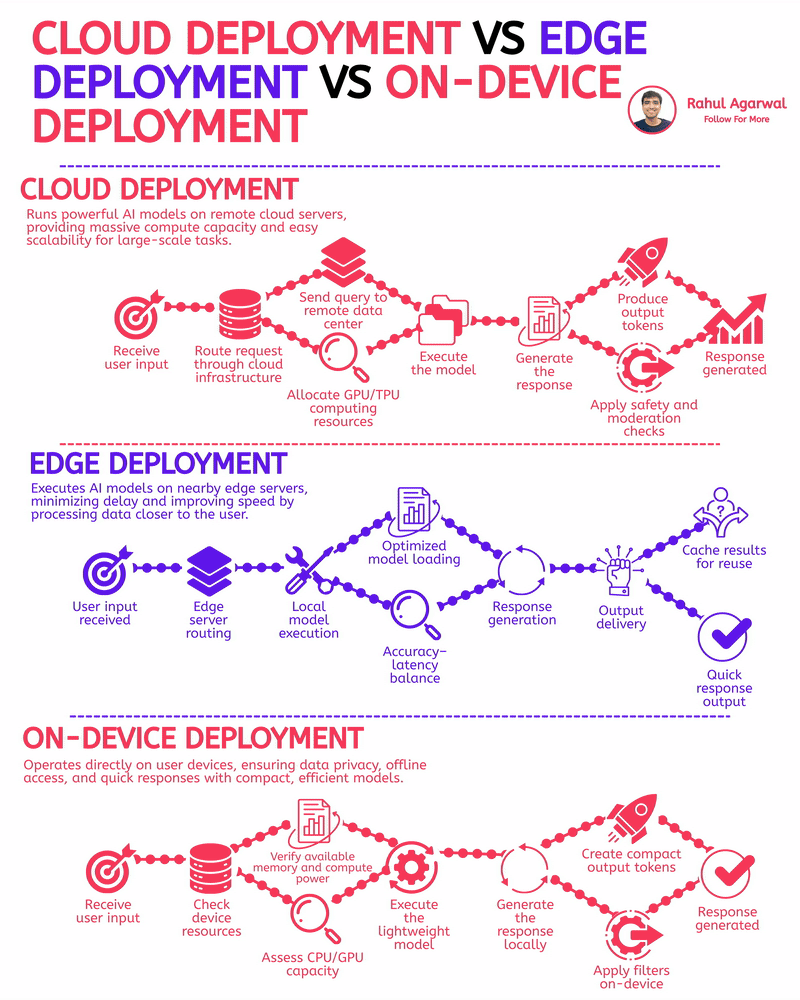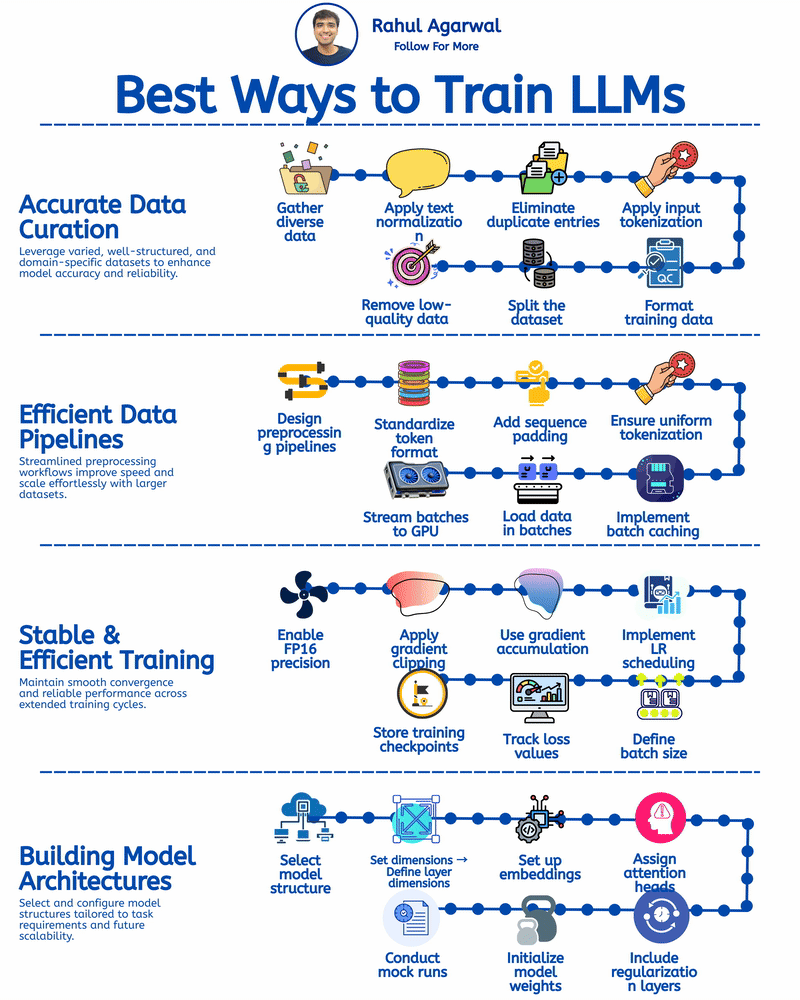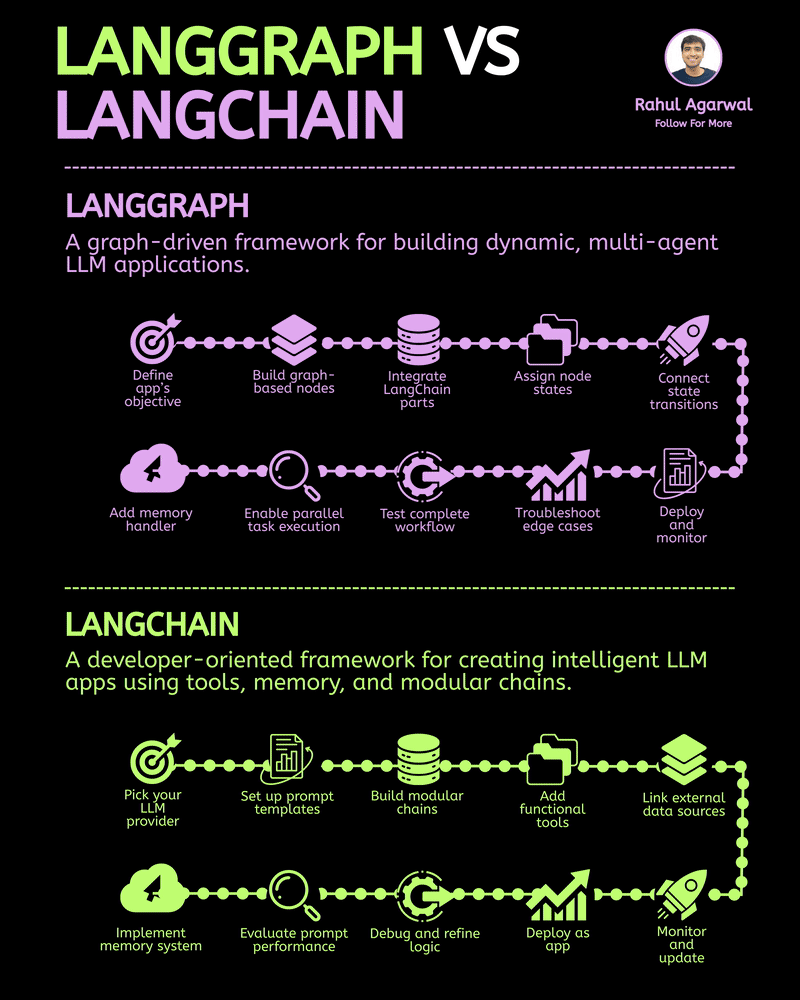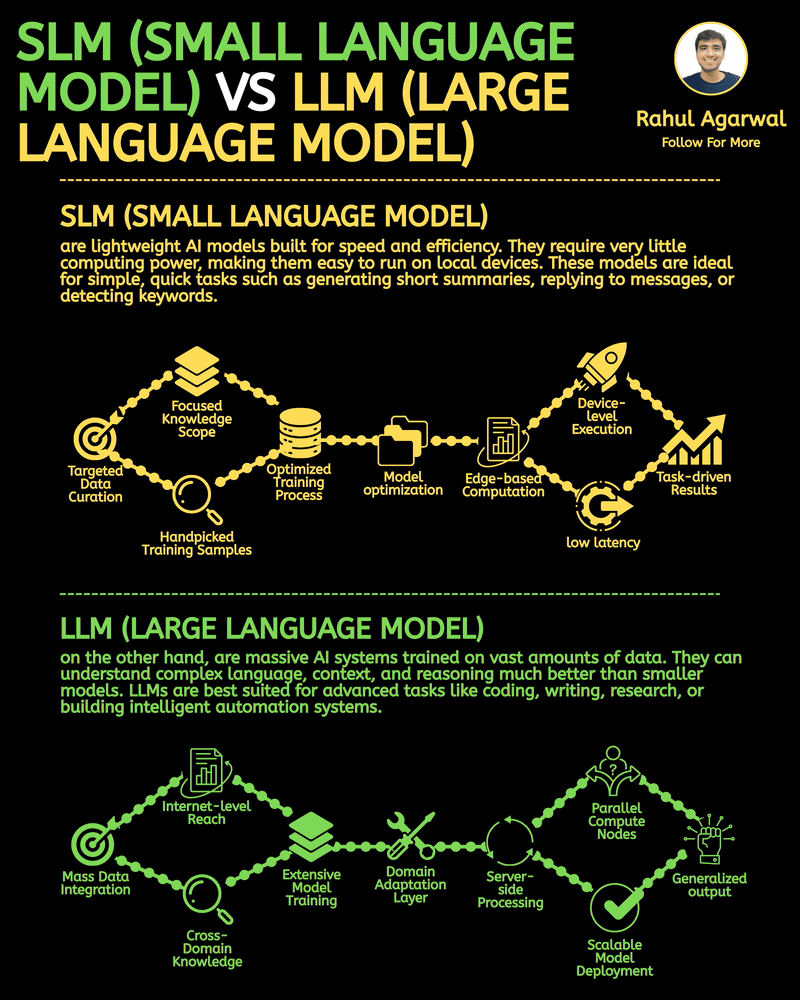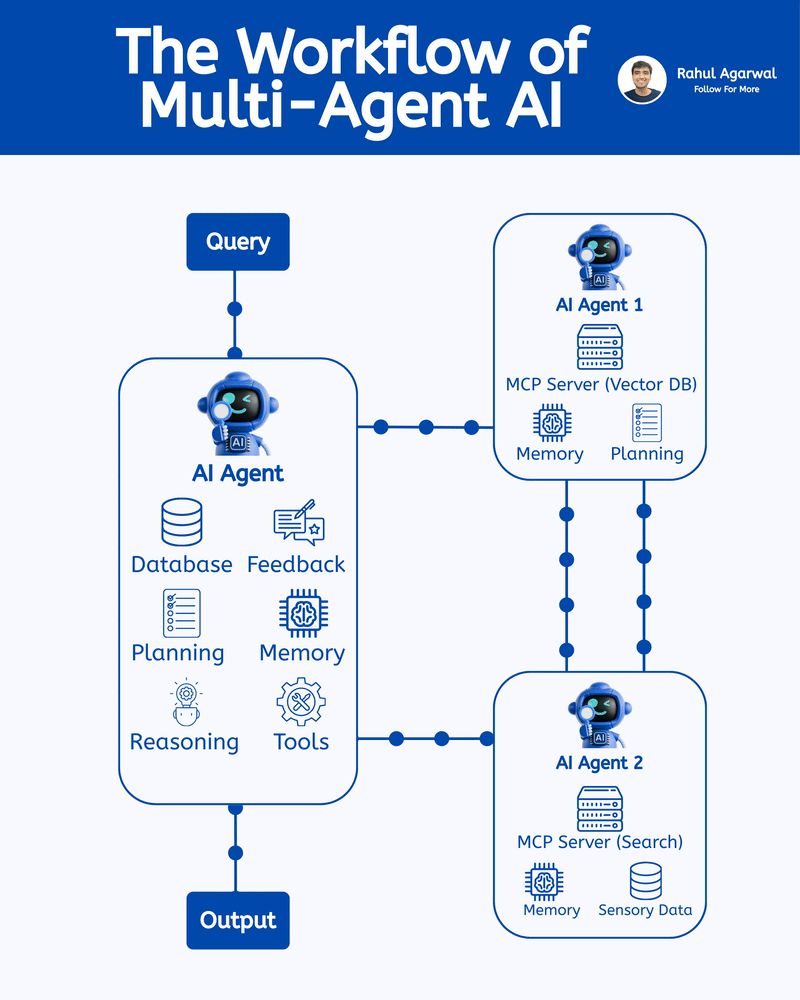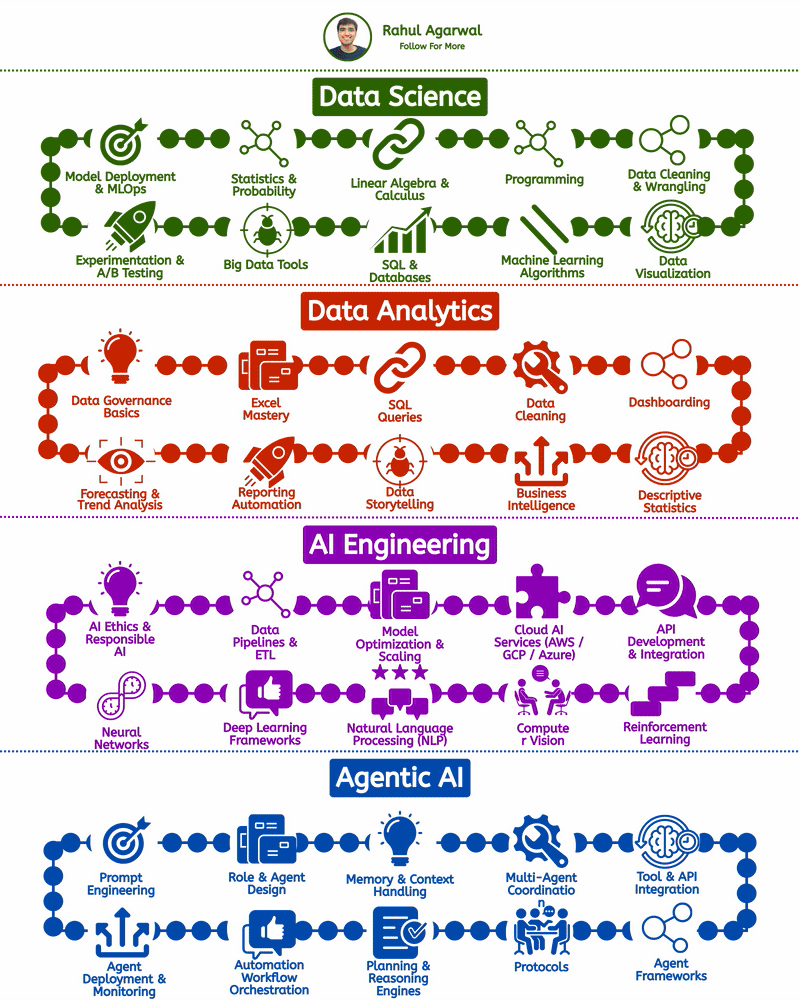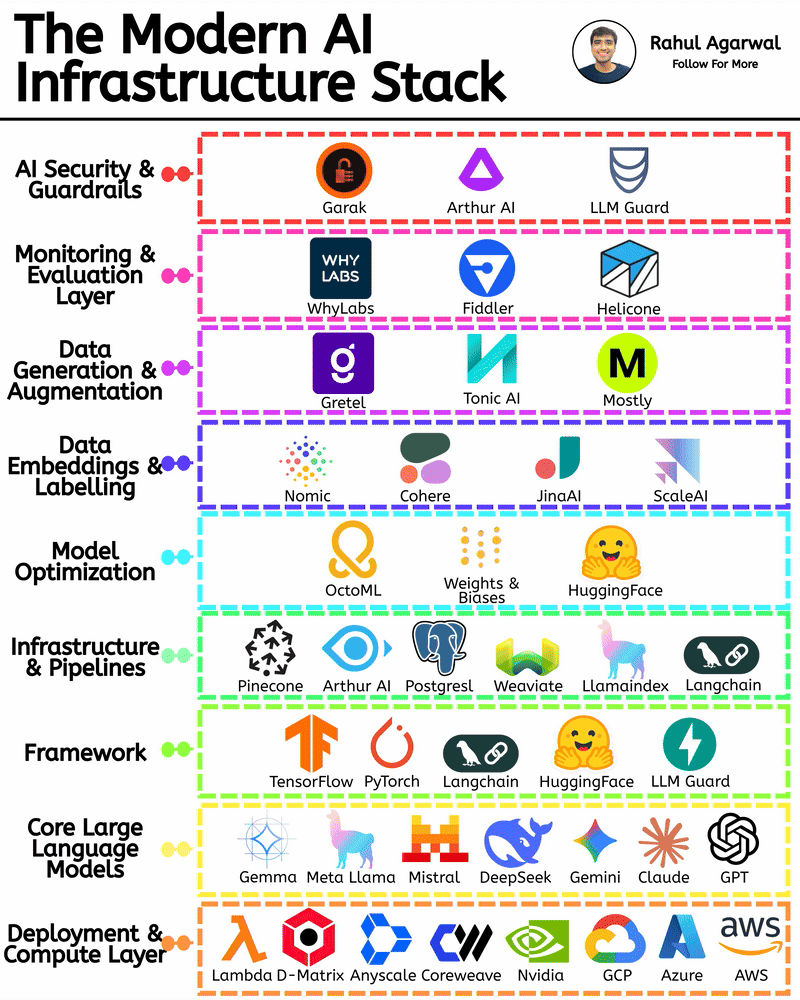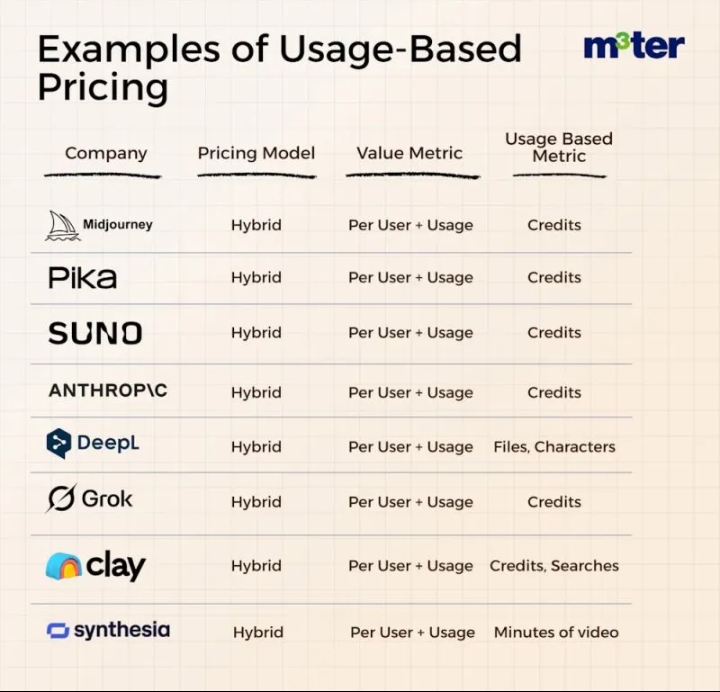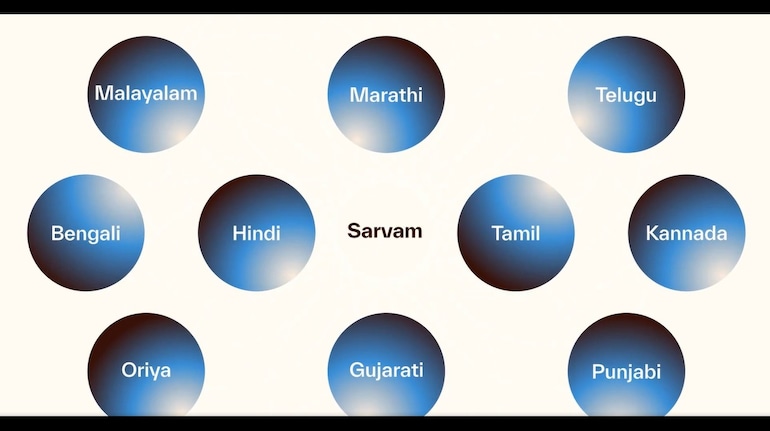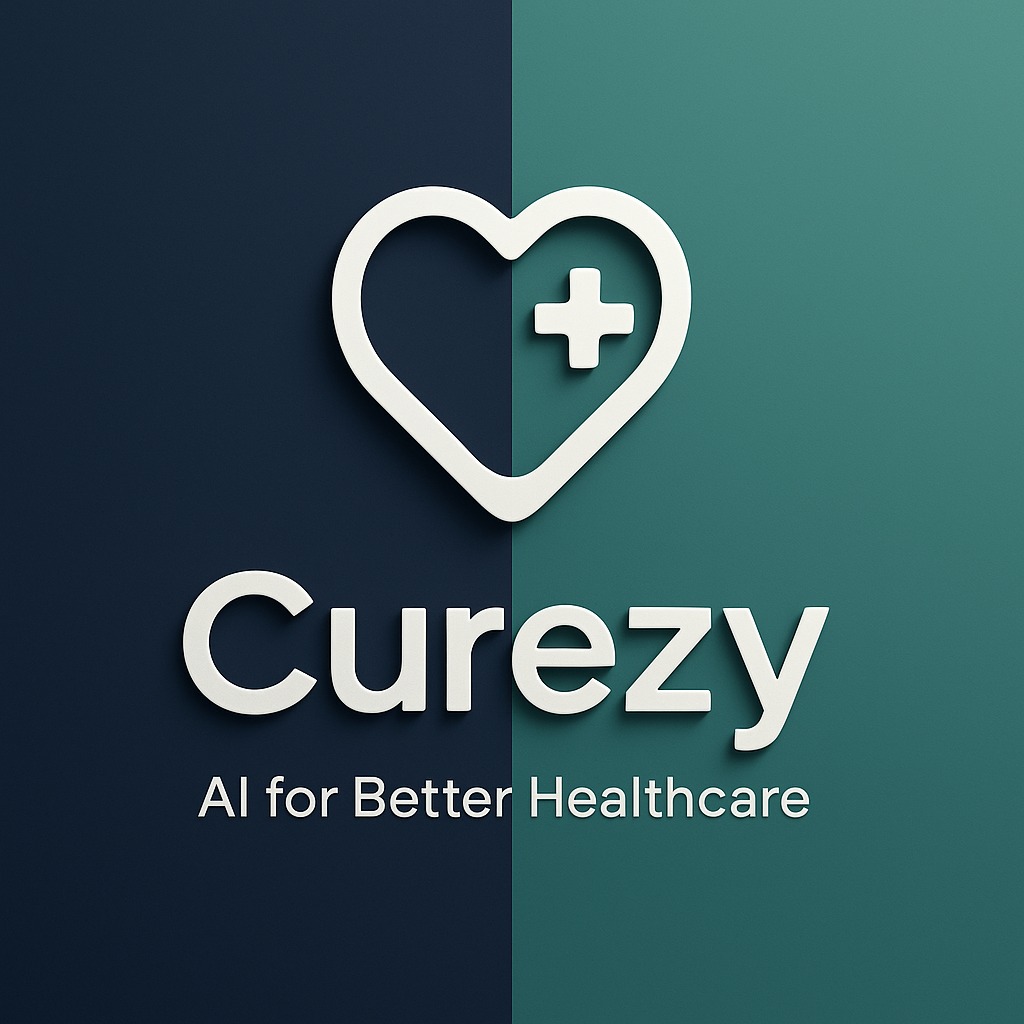Back
Rahul Agarwal
Founder | Agentic AI... • 3m
3 ways how most AI systems are built. I’ve explained each one step-by-step. 1) 𝗧𝗿𝗮𝗱𝗶𝘁𝗶𝗼𝗻𝗮𝗹 𝗔𝗜 (𝘀𝘁𝗲𝗽-𝗯𝘆-𝘀𝘁𝗲𝗽) 1. 𝗦𝗲𝘁 𝘁𝗮𝘀𝗸 – Decide what problem the model should solve. 2. 𝗖𝗼𝗹𝗹𝗲𝗰𝘁 𝗱𝗮𝘁𝗮 – Gather lots of examples. 3. 𝗣𝗿𝗲𝗽𝗮𝗿𝗲 𝗱𝗮𝘁𝗮 – Clean and label it so the model learns correctly. 4. 𝗕𝘂𝗶𝗹𝗱 𝗶𝗻𝗱𝗲𝘅 – Make data searchable with embeddings. 5. 𝗧𝗿𝗮𝗶𝗻 𝗺𝗼𝗱𝗲𝗹 – Teach the model using the prepared data. 6. 𝗗𝗲𝗽𝗹𝗼𝘆 – Put the trained model into use. 7. 𝗚𝗲𝘁 𝗿𝗲𝘀𝘂𝗹𝘁𝘀 – Model answers queries based on training. 8. 𝗘𝘃𝗮𝗹𝘂𝗮𝘁𝗲 – Measure performance and retrain if needed. _________________________________________________ 2) 𝗔𝗴𝗲𝗻𝘁𝗶𝗰 𝗔𝗜 (𝘀𝘁𝗲𝗽-𝗯𝘆-𝘀𝘁𝗲𝗽) 1. 𝗦𝗲𝘁 𝗴𝗼𝗮𝗹 – Give the agent a clear objective. 2. 𝗣𝗶𝗰𝗸 𝗟𝗟𝗠 – Use a language model as the agent’s brain. 3. 𝗖𝗼𝗻𝗻𝗲𝗰𝘁 𝘁𝗼𝗼𝗹𝘀 & 𝗔𝗣𝗜𝘀 – Link it to calendars, browsers, databases, etc. 4. 𝗦𝗲𝗮𝗿𝗰𝗵 & 𝗳𝗲𝘁𝗰𝗵 – Agent can look up info or call external services. 5. 𝗣𝗹𝗮𝗻 𝘄𝗼𝗿𝗸𝗳𝗹𝗼𝘄 – Breaks goal into steps, loops until complete. 6. 𝗗𝗲𝗰𝗶𝗱𝗲 𝗮𝗰𝘁𝗶𝗼𝗻𝘀 – Chooses next steps without human input. 7. 𝗘𝘅𝗲𝗰𝘂𝘁𝗲 𝘁𝗮𝘀𝗸𝘀 – Sends emails, runs scripts, calls APIs. 8. 𝗟𝗲𝗮𝗿𝗻 & 𝗶𝗺𝗽𝗿𝗼𝘃𝗲 – Adjusts based on outcomes over time. _______________________________________________ 3) 𝗔𝗴𝗲𝗻𝘁𝗶𝗰 𝗥𝗔𝗚 (𝘀𝘁𝗲𝗽-𝗯𝘆-𝘀𝘁𝗲𝗽) RAG = 𝗥𝗲𝘁𝗿𝗶𝗲𝘃𝗮𝗹-𝗔𝘂𝗴𝗺𝗲𝗻𝘁𝗲𝗱 𝗚𝗲𝗻𝗲𝗿𝗮𝘁𝗶𝗼𝗻. Agentic RAG combines agentic behavior with fast retrieval of grounded information. 1. 𝗦𝗲𝘁 𝗴𝗼𝗮𝗹 – Define the task clearly. 2. 𝗥𝗲𝘁𝗿𝗶𝗲𝘃𝗲 𝗱𝗮𝘁𝗮 – Pull relevant docs or knowledge from databases. 3. 𝗩𝗲𝗰𝘁𝗼𝗿 𝘀𝗲𝗮𝗿𝗰𝗵 / 𝗔𝗣𝗜 𝗰𝗮𝗹𝗹𝘀 – Use embeddings and search indexes to find exact, relevant facts. 4. 𝗗𝗲𝘀𝗶𝗴𝗻 𝗺𝘂𝗹𝘁𝗶-𝘀𝘁𝗲𝗽 𝗽𝗿𝗼𝗰𝗲𝘀𝘀: Agent plans steps using the retrieved knowledge. 5. 𝗟𝗼𝗼𝗽 𝗹𝗼𝗴𝗶𝗰 – Retrieve → reason → act → verify. 6. 𝗜𝗺𝗽𝗹𝗲𝗺𝗲𝗻𝘁 𝗮𝗰𝘁𝗶𝗼𝗻𝘀 & 𝗾𝘂𝗲𝗿𝘆 𝗔𝗣𝗜𝘀: Carry out actions (call services, update DB). 7. 𝗖𝗵𝗲𝗰𝗸 𝗿𝗲𝘀𝘂𝗹𝘁𝘀 – Verify answers against facts for accuracy. 8. 𝗥𝗲𝗳𝗿𝗲𝘀𝗵 𝗺𝗲𝗺𝗼𝗿𝘆 – Save outcomes into memory or vector DB so future tasks use updated info. 9. 𝗔𝗱𝗮𝗽𝘁 – System improves over time with stored results. _____________________________________________ ✅ Which to pick? • Use 𝗧𝗿𝗮𝗱𝗶𝘁𝗶𝗼𝗻𝗮𝗹 𝗔𝗜 when task is narrow, stable, and must be highly reliable (e.g., image recognition in a controlled domain). • Use 𝗔𝗴𝗲𝗻𝘁𝗶𝗰 𝗔𝗜 when automation of multi-step work is needed (scheduling, orchestration, admin tasks). • Use 𝗔𝗴𝗲𝗻𝘁𝗶𝗰 𝗥𝗔𝗚 when you need both action and factually grounded responses drawn from up-to-date data (customer support, codebase assistant, enterprise knowledge work). ✅ Repost this for others in your network.
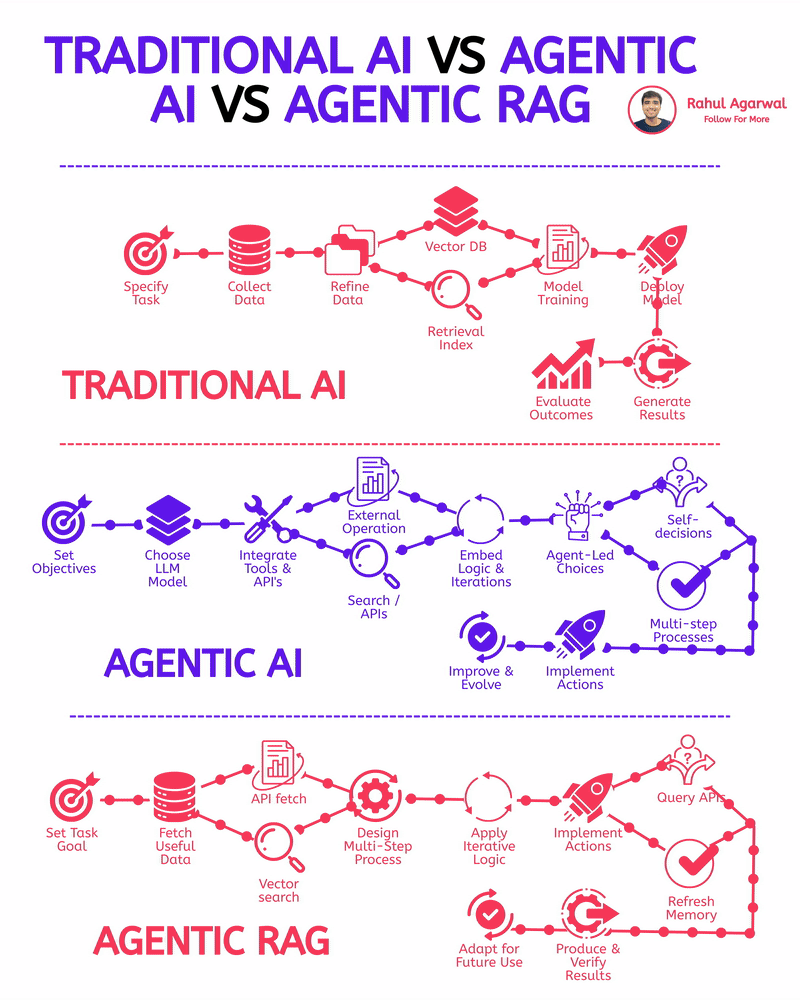
Replies (1)
More like this
Recommendations from Medial
Download the medial app to read full posts, comements and news.



